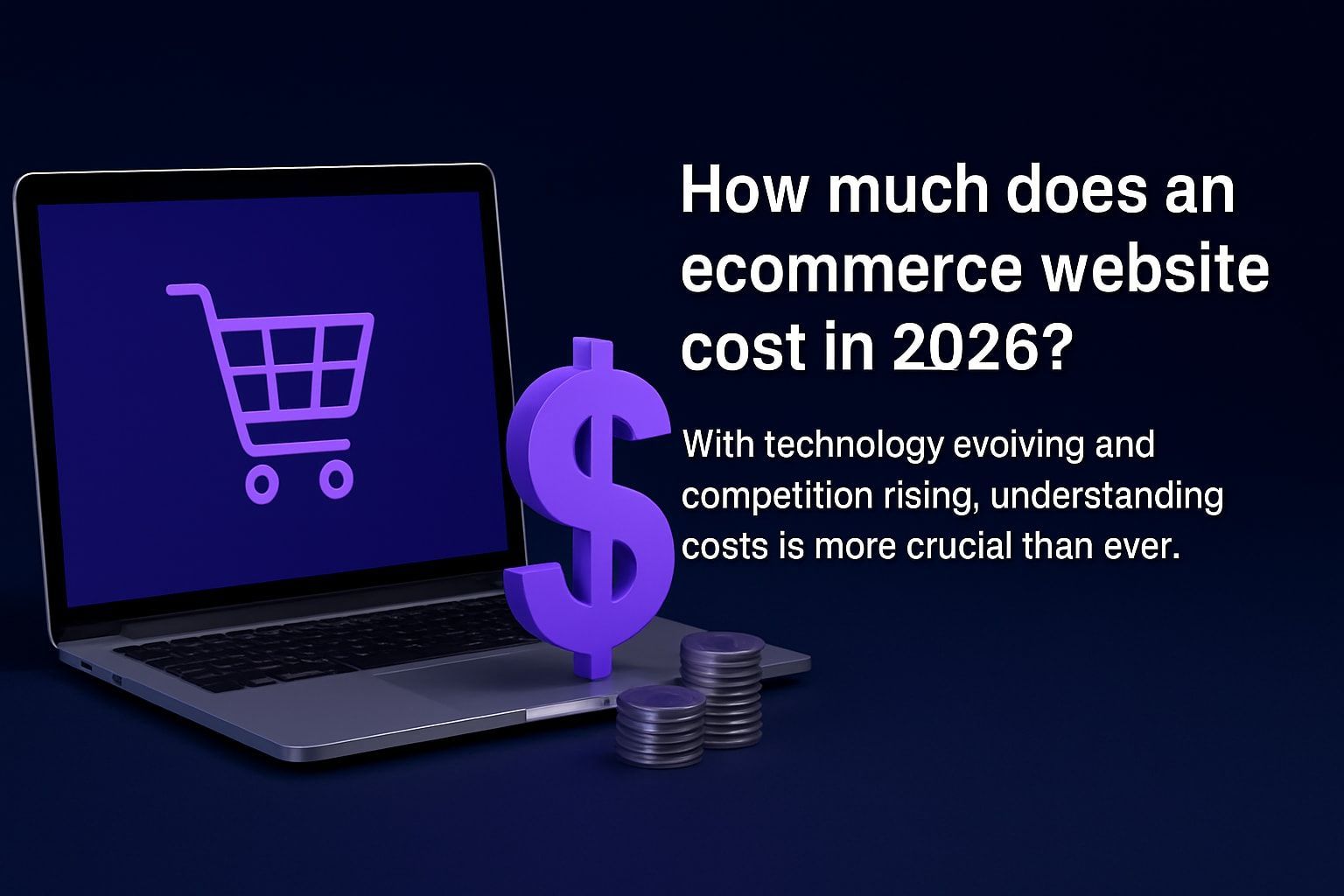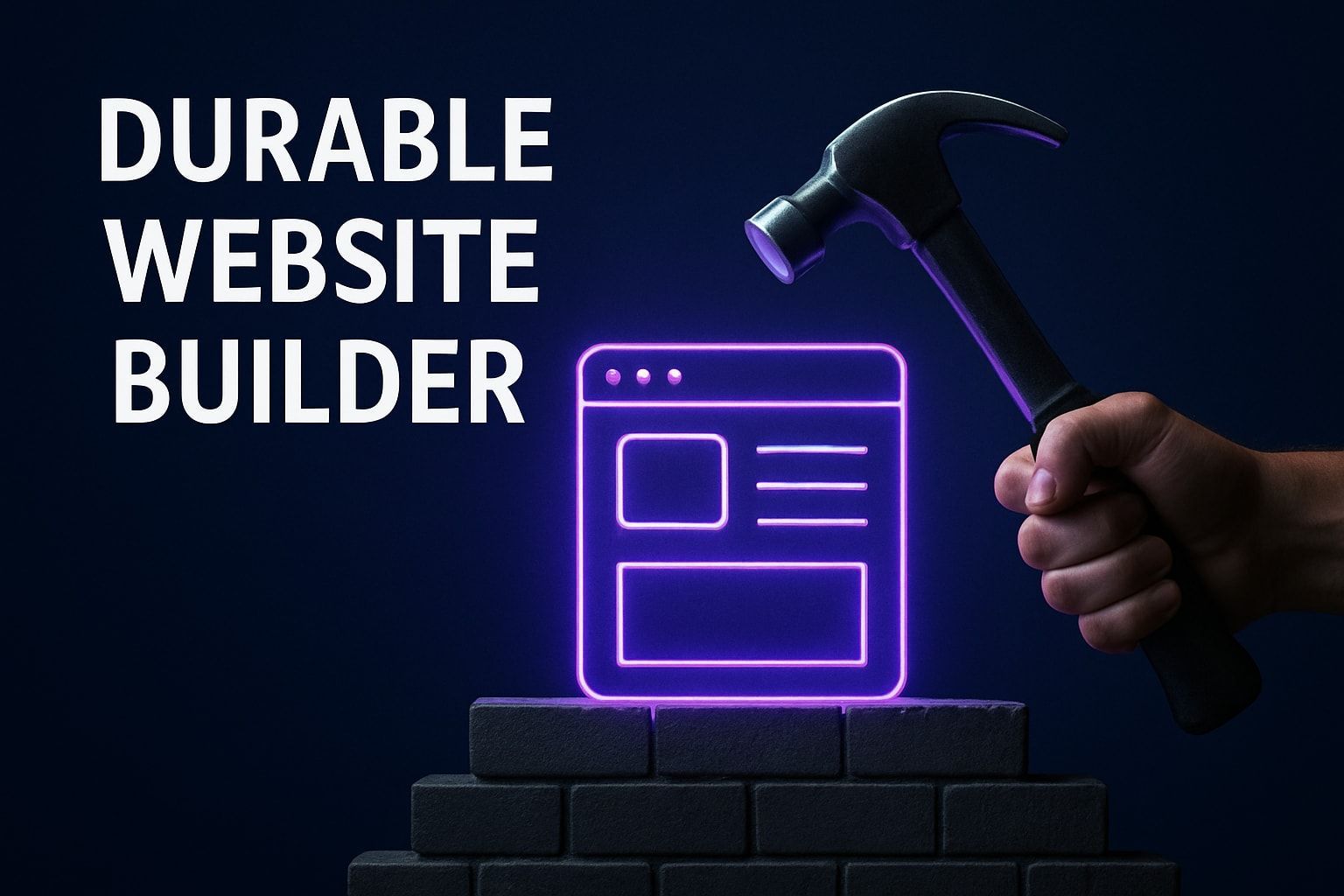The Ultimate Guide to Performance of the Website (2025)
Did you know a single second delay can slash your conversion rate by up to 20%? The performance of the website is no longer just a technical concern—it’s a key driver of business success in today’s fast-paced digital world.
This guide will show you how to master the performance of the website in 2025. You’ll discover the latest strategies, tools, and practical steps to boost speed, improve user experience, and climb higher in search rankings.
Ready to unlock the full potential of your site? Dive in to learn how to optimize every aspect and stay ahead of the competition.
Understanding Website Performance: Key Concepts and Metrics
Website performance is multi-dimensional, but at its core, it’s about how quickly and smoothly your site responds to visitors. The performance of the website is measured by how fast content loads, how responsive it feels to user actions, and how stable the layout remains as the page renders.
Fast, stable sites create a positive first impression. If the performance of the website lags, users may bounce before your content even loads. In a world where attention spans are shrinking, every millisecond counts.
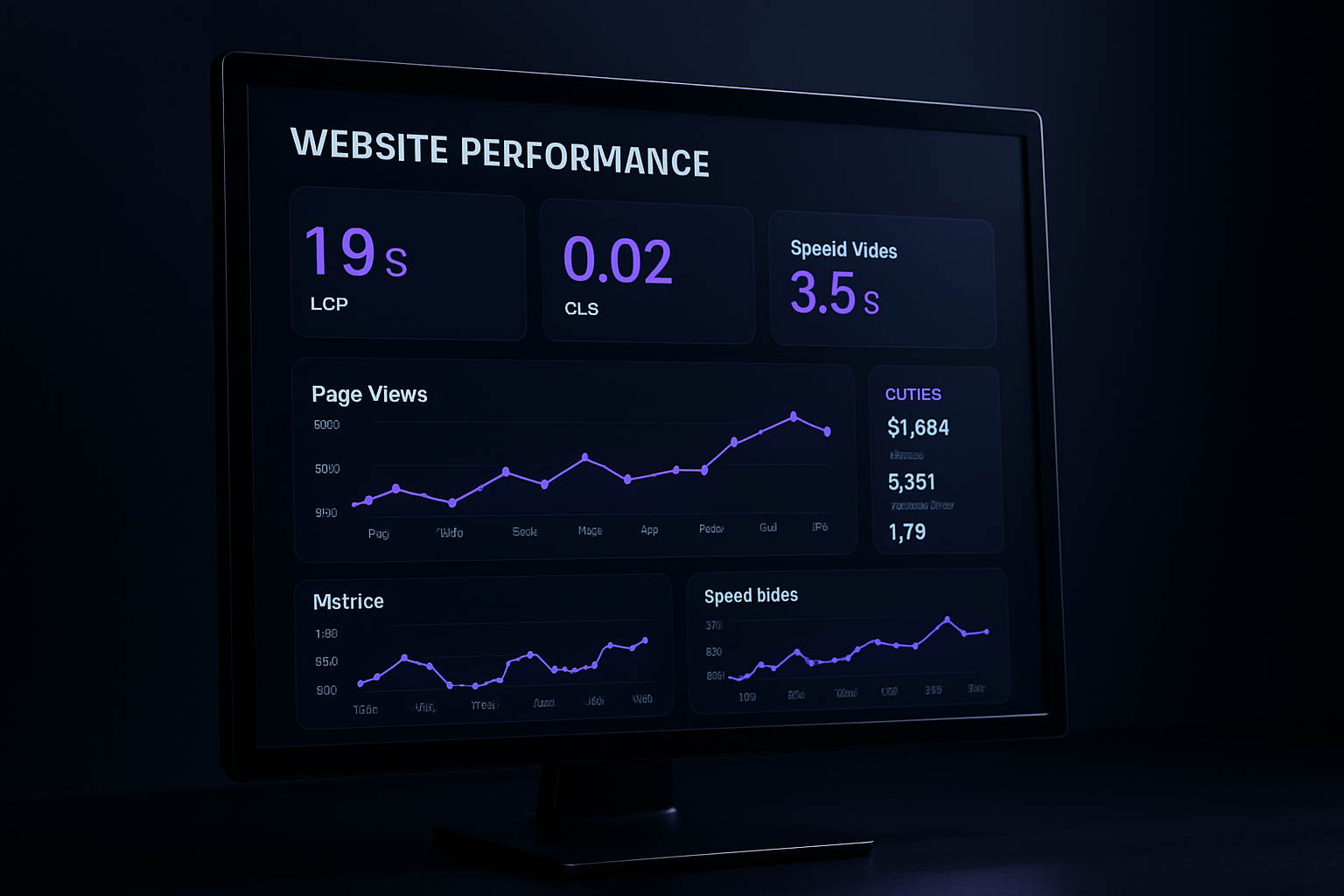
What is Website Performance?
At its simplest, website performance refers to how efficiently your site delivers content to users. It’s not just about speed—it’s about the overall experience. When evaluating the performance of the website, focus on three pillars: loading speed, responsiveness to user input, and visual stability. These elements combine to shape how your audience perceives and interacts with your site.
Why Performance Matters for Business
The performance of the website directly impacts your bottom line. Sites that load quickly rank higher in search engines, enjoy better conversion rates, and retain more users. Google uses site speed as a ranking factor, and slow pages often see higher bounce rates. Even a slight delay can mean lost revenue and missed opportunities. In 2025, seamless performance will be a baseline expectation, not a luxury.
Core Web Vitals: The Heartbeat of Performance
Google’s Core Web Vitals are now the gold standard for measuring the performance of the website. These metrics include Largest Contentful Paint (LCP) for load speed, First Input Delay (FID) for interactivity, and Cumulative Layout Shift (CLS) for visual stability. In 2025, new metrics like Interaction to Next Paint (INP) are taking center stage. To learn more about these evolving standards and how to optimize for them, check out this Core Web Vitals 2025 Update. Staying current ensures your site delivers a top-tier experience.
Beyond the Basics: Additional Key Metrics
While Core Web Vitals form the backbone of modern measurement, several other metrics give deeper insights into the performance of the website. Time to First Byte (TTFB) measures how quickly the server responds. Speed Index shows how fast content is visually displayed. Interaction to Next Paint (INP) is now essential for gauging real-world responsiveness. Monitoring these metrics rounds out your performance toolkit.
Real-World Benchmarks and User Expectations
How does your site stack up? In 2025, users expect pages to load in under two seconds. The performance of the website is judged against industry benchmarks—top brands often achieve sub-second load times. Meeting or exceeding these standards boosts credibility and keeps visitors engaged.
| Metric | Good (2025) | Needs Improvement | Poor |
|---|---|---|---|
| LCP | < 1.8s | 1.8s–2.5s | > 2.5s |
| CLS | < 0.1 | 0.1–0.25 | > 0.25 |
| INP | < 200ms | 200ms–500ms | > 500ms |
Case Study: Performance Pays Off
Consider how a global retailer tackled the performance of the website. By streamlining images and optimizing scripts, they reduced load times by 40%. This led to a 15% boost in conversions and lower bounce rates. The ROI was clear: investing in performance drives measurable business results.
Common Pitfalls in Measuring Performance
Many teams focus solely on lab-based tests, missing real user experiences. The performance of the website can appear strong in simulations but falter in the wild due to network variability or third-party scripts. Avoid relying on a single metric or tool. Comprehensive measurement is key.
Essential Tools for Monitoring
To maintain the performance of the website, leverage tools like Google Lighthouse, PageSpeed Insights, WebPageTest, and Chrome DevTools. These platforms help you audit, benchmark, and continuously improve. Real user monitoring (RUM) adds another layer, capturing the true experience of your visitors.
Factors Influencing Website Performance
The performance of the website is shaped by a wide range of technical and strategic choices. Understanding these factors helps you identify where to focus your optimization efforts for the best results.

Hosting Environment: The Foundation of Website Speed
Your hosting environment is the backbone of the performance of the website. Shared hosting is affordable but can lead to slowdowns during traffic spikes. VPS and dedicated hosting offer more resources and isolation, while cloud hosting scales resources dynamically, supporting faster load times and reliability. Choosing the right infrastructure is the first step to a high-performing site.
Front-End Optimization: HTML, CSS, and JavaScript
The front-end determines how quickly users see and interact with your content. Clean, minified code, optimized CSS, and efficient JavaScript are essential. Modern frameworks like React or Vue offer flexibility but can introduce complexity if not managed well. Using optimized website templates can give your site a head start with fast, mobile-friendly foundations, directly improving the performance of the website.
Back-End Performance: Server and Database Efficiency
The back-end is crucial for processing user requests and delivering content. Fast server response times, efficient API calls, and well-indexed databases reduce bottlenecks. Query optimization and caching mechanisms further enhance the performance of the website, especially for dynamic or database-driven sites.
Media and Asset Management: Images, Video, and More
Large images, uncompressed videos, and unoptimized files are among the biggest culprits for slow load times. Choosing next-gen formats like WebP and AVIF, compressing media, and implementing lazy loading can dramatically improve the performance of the website. Responsive images ensure users on all devices get the best experience.
Third-Party Scripts: Hidden Performance Drains
Analytics, ad networks, chat widgets, and other third-party scripts can quietly erode the performance of the website. Each script adds requests and processing time. Audit and prioritize only essential scripts, load them asynchronously, and consider alternatives that are lighter or offer deferred loading options.
Mobile Performance: Speed on Every Device
With the majority of web traffic now on mobile, optimizing for smaller screens and slower networks is non-negotiable. Responsive design, mobile-first development, and techniques like Accelerated Mobile Pages (AMP) ensure the performance of the website remains strong regardless of device. Test regularly on real devices to catch issues early.
Security and Protocols: SSL, HTTP/2, and Beyond
Security features also affect speed. SSL (HTTPS) is mandatory for trust and SEO, while protocols like HTTP/2 and Content Security Policy (CSP) streamline data transfer and protect users. Implementing these technologies can boost the performance of the website by allowing faster, safer connections.
CDN Usage: Global Speed and Reliability
A Content Delivery Network (CDN) distributes your site’s assets across servers worldwide. This minimizes the distance between your site and users, improving load times and ensuring the performance of the website is consistent for global audiences. CDNs are essential for any website aiming for top-tier speed and reliability.
Step-by-Step Guide to Optimizing Website Performance
Achieving top-tier performance of the website in 2025 requires a holistic, step-by-step approach. Let’s break down each crucial phase so you can systematically boost speed, user experience, and rankings.
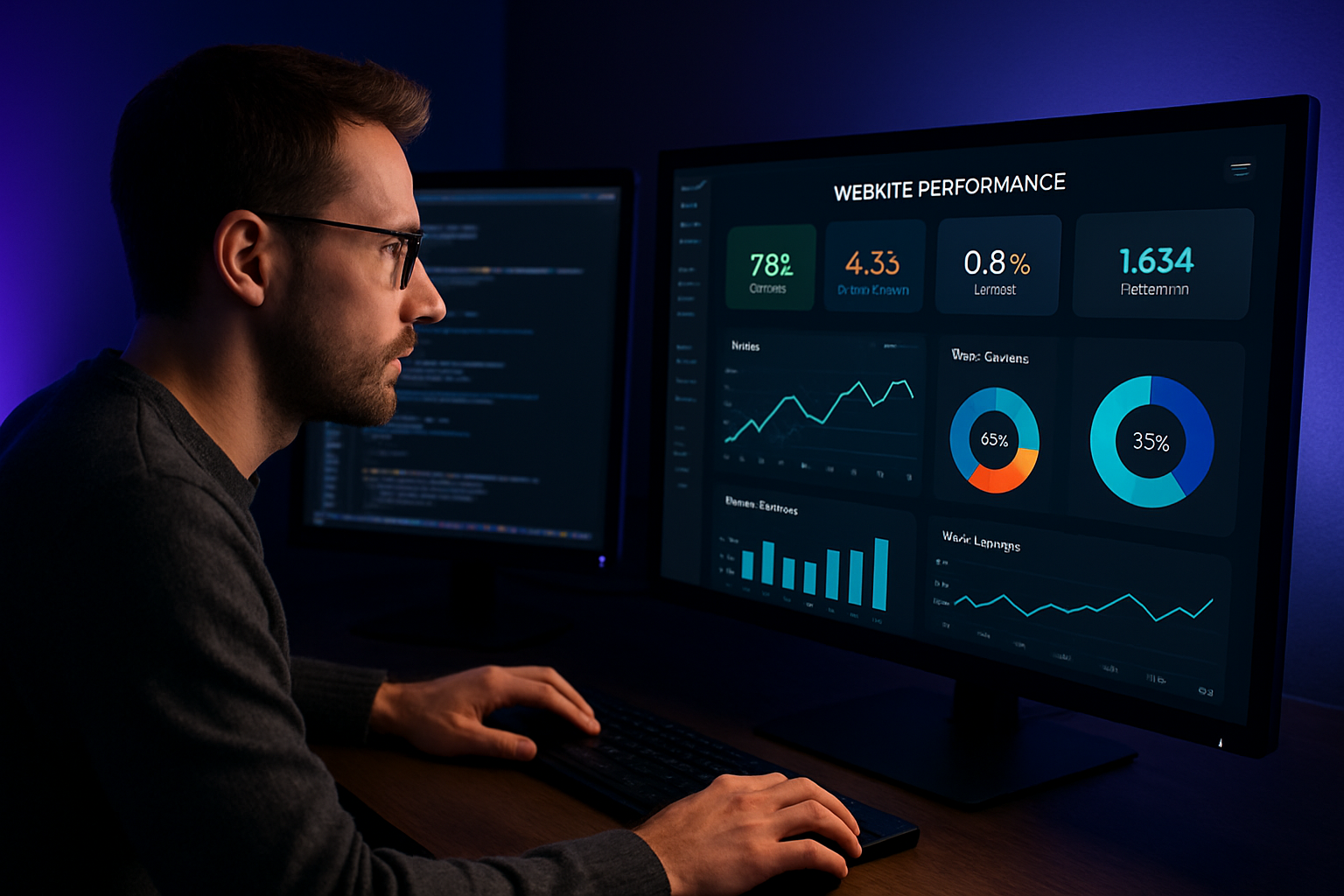
Step 1: Audit Your Website
Start by running a comprehensive audit to establish a baseline for the performance of the website. Use tools like Google Lighthouse, PageSpeed Insights, and WebPageTest to analyze load times, resource usage, and user experience.
Check waterfall charts for slow-loading assets and resource timing to pinpoint bottlenecks. Real User Monitoring (RUM) provides valuable insights into how actual visitors experience your site in real time.
Prioritize issues that impact conversions and SEO, such as slow server responses or unoptimized images. Create a checklist of critical fixes, focusing on elements that most influence performance of the website.
| Audit Tool | Key Feature | Free/Paid |
|---|---|---|
| Google Lighthouse | Core Web Vitals | Free |
| WebPageTest | Detailed Waterfall | Free |
| PageSpeed Insights | Field Data | Free |
A detailed audit sets the stage for measurable improvements and ongoing optimization.
Step 2: Optimize Hosting and Infrastructure
Your hosting environment has a direct effect on the performance of the website. Evaluate whether shared hosting, VPS, dedicated servers, or cloud platforms like AWS, GCP, or Azure best suit your needs.
Consider serverless architectures for scalability and efficiency. Integrate a Content Delivery Network (CDN) to ensure assets are delivered quickly worldwide, reducing latency for global users.
Edge computing pushes processing closer to the user, further enhancing site speed. Upgrading your hosting plan or infrastructure can resolve many hidden slowdowns and ensure the performance of the website remains consistent during traffic spikes.
Step 3: Minimize and Optimize Code
Reducing file sizes and streamlining code is essential for the performance of the website. Minify CSS, JavaScript, and HTML to eliminate unnecessary whitespace and comments.
Remove unused code with techniques like tree shaking and code splitting. Modular design ensures only the needed components are loaded.
Implement asynchronous loading and defer non-critical scripts using the
async
and
defer
attributes in your HTML:
<script src="script.js" async></script>
These strategies accelerate rendering, helping the performance of the website shine even on slower connections.
Step 4: Optimize Images and Media
Images and videos are often the largest assets affecting the performance of the website. Switch to next-generation formats like WebP and AVIF for superior compression without quality loss.
Serve adaptive images tailored to device size and network conditions. Implement lazy loading to delay offscreen images until needed:
<img src="image.webp" loading="lazy" alt="Optimized image">
Compress videos and use streaming for longer content. For more advanced methods, explore Website Speed Optimization Techniques 2025 to stay ahead of the curve.
Consistent media optimization delivers a smoother experience and boosts the performance of the website for all users.
Step 5: Enhance Server and Database Performance
Efficient servers and databases are vital for the performance of the website. Implement caching at the browser, server, and CDN levels to minimize unnecessary requests.
Optimize your database by tuning queries, adding indexes, and using connection pooling. Reduce server response times by streamlining back-end logic and minimizing heavy computations.
Regularly monitor server health and database performance to catch issues before they impact the user. A finely tuned back end ensures the performance of the website remains strong under pressure.
Step 6: Improve Mobile and Accessibility Performance
With mobile traffic dominating, optimizing for mobile is non-negotiable for the performance of the website. Use mobile-first design, optimize viewports, and ensure fast load times on all devices.
Prioritize accessibility by following WCAG guidelines, providing alt text, and ensuring keyboard navigation. Test across various devices and network conditions to guarantee a seamless experience for everyone.
Making your site accessible and mobile-friendly not only improves the performance of the website but also expands your audience reach and search visibility.
Step 7: Monitor, Test, and Iterate
Optimization is an ongoing process. Set up continuous monitoring with automated alerts to track changes in the performance of the website.
Conduct A/B testing to validate improvements and gather user feedback for further enhancements. Leverage analytics to measure the real-world impact of your efforts.
By embracing a culture of testing and iteration, you ensure the performance of the website evolves alongside user expectations and technology trends.
Advanced Strategies for High-Performing Websites
Staying ahead in 2025 means going beyond the basics. The performance of the website is now determined by a mix of cutting-edge technologies, real-user insights, and automation. Let’s explore the proven tactics that industry leaders use to achieve lightning-fast, resilient sites.
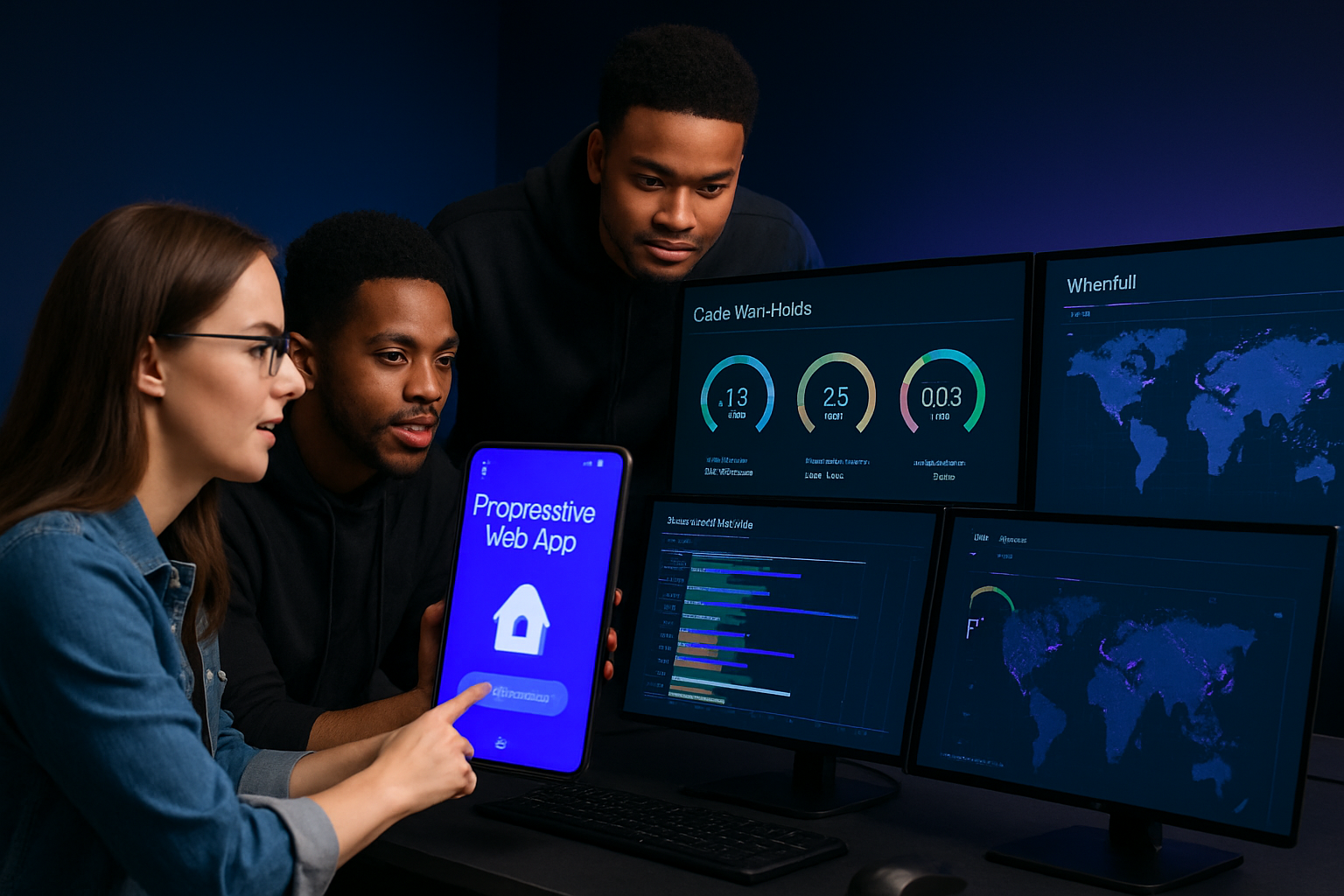
Progressive Web Apps (PWAs): App-Like Speed and Engagement
PWAs blur the line between websites and native apps. By caching critical assets, enabling offline access, and delivering push notifications, they dramatically boost the performance of the website.
- Service workers act as a proxy, controlling network requests and caching.
- App shell architecture loads instantly, even on repeat visits.
- Installable on devices for a seamless experience.
PWAs can lead to higher engagement and retention, making them a cornerstone for future-ready performance.
Preloading, Prefetching, and Resource Prioritization
Optimizing how browsers load resources is vital for the performance of the website. Preloading tells browsers which assets are critical, while prefetching prepares future resources in the background.
<link rel="preload" href="/fonts/main.woff2" as="font" type="font/woff2" crossorigin>
- Preload: For fonts, hero images, or key scripts.
- Prefetch: For next-page or anticipated content.
- Resource hints: Like
dns-prefetchandpreconnectspeed up external requests.
These techniques ensure users see content faster, reducing perceived load times.
Edge Computing and Serverless Functions
Traditional servers can’t always deliver instant responses worldwide. Edge computing moves content and logic closer to users, slashing latency and improving the performance of the website.
- Edge networks distribute static assets globally.
- Serverless functions handle dynamic tasks at the edge, scaling instantly.
- Reduced round-trip times mean snappier interactions for everyone.
Combining these with a robust CDN creates a resilient, high-speed foundation for any site.
HTTP/3 and QUIC: The Next Generation of Speed
Adopting HTTP/3 and QUIC protocols is a major leap for the performance of the website. Unlike older protocols, they use UDP to establish faster, more reliable connections.
- Multiplexed streams: No head-of-line blocking.
- Built-in encryption: Enhanced security by default.
- Faster handshake: Reduces connection setup time.
Early adopters report measurable gains in both real and perceived performance.
AI-Driven Performance Optimization
Artificial intelligence is revolutionizing the performance of the website. AI tools automate image compression, analyze code for bottlenecks, and adaptively load assets based on user behavior.
- Automated audits identify and fix performance issues in real-time.
- Smart asset delivery tailors image and script sizes to device and network.
- Predictive analytics help prevent slowdowns before they occur.
Integrating AI means continually optimized sites with minimal manual effort.
Real User Monitoring (RUM) vs. Synthetic Monitoring
Understanding how real people experience your site is crucial. RUM captures live user interactions, while synthetic monitoring uses scripted tests. Here’s a quick comparison:
| Feature | RUM (Real User) | Synthetic Monitoring |
|---|---|---|
| Data Source | Actual users | Simulated bots |
| Scope | All users, all devices | Predefined scenarios |
| Insights | Real-world performance | Consistent, controlled |
Want to dive deeper into how RUM is shaping the performance of the website in 2025? Check out the insights on Web Performance Trends 2025.
Security Best Practices That Enhance Performance
Strong security doesn’t just protect—it accelerates the performance of the website.
- Strict Content Security Policy (CSP): Blocks malicious scripts, reducing overhead.
- Minimal third-party access: Cuts unnecessary requests.
- SSL/TLS and HTTP/2: Secure, multiplexed connections for speed.
Security and speed are now inseparable in modern web strategy.
Case Study: Sub-Second Load Times in eCommerce
A leading eCommerce brand implemented PWAs, resource prioritization, edge computing, and AI-driven optimization. The result? Sub-second load times and a 30% increase in conversions, proving that investment in the performance of the website pays off—both in speed and revenue.
Future Trends in Website Performance (2025 and Beyond)
The future of the performance of the website is evolving quickly. As technology accelerates, staying ahead means watching for the next big wave. Let’s explore the trends set to shape fast, resilient, and user-centric sites in 2025 and beyond.
AI and Machine Learning Powering Automation
Artificial intelligence is at the heart of the next generation of performance of the website. AI-driven tools now analyze bottlenecks, automate code optimization, and personalize asset delivery based on each visitor’s device and network. Machine learning algorithms continually adapt, learning from real user data to tweak speed and reliability without manual intervention. This shift means developers can focus on strategy, while AI ensures sites stay lightning-fast.
The 5G Revolution, Edge Networks, and IoT
With 5G rolling out globally, the performance of the website is reaching new heights. Faster cellular connections and edge computing mean content is delivered closer to users, reducing latency dramatically. The explosion of IoT devices brings new design considerations, requiring lightweight assets and responsive layouts. Sites must now serve users on everything from smartwatches to connected appliances, demanding agility and speed at every layer.
Evolving Core Web Vitals and New Metrics
Google continues to refine how it measures the performance of the website. In 2025, Core Web Vitals will likely include new metrics for interactivity and visual stability. Staying up to date is crucial; even small changes can impact search rankings. For a comprehensive breakdown of future-focused strategies, check out this Core Web Vitals Optimization Guide. Proactive monitoring ensures your site remains ahead of the curve.
Privacy, Security, and Regulatory Impact
Privacy regulations like GDPR and CCPA are shaping the future of the performance of the website. Stricter data handling and security requirements can add overhead, but smart implementation minimizes their impact on speed. Encryption protocols and cookie consent tools must be streamlined. Forward-thinking sites prioritize compliance while still delivering seamless, fast experiences for every visitor.
Sustainability and Green Hosting
Sustainability is now a core concern for the performance of the website. Eco-friendly hosting providers use renewable energy, and efficient code reduces unnecessary processing. In 2025, web teams will prioritize green hosting and energy-efficient frameworks. Simple changes—like image compression and resource minification—not only boost speed but also lower your site’s carbon footprint, helping your brand appeal to environmentally conscious users.
Headless CMS and Jamstack Flexibility
Modern architecture is changing the performance of the website. Headless CMS and Jamstack decouple front-end and back-end, improving scalability and reducing load times. Static site generation and serverless functions allow for instant content delivery. Teams can push updates globally in seconds, making sites more resilient and adaptable to future demands.
Predictive Performance with Analytics and AI
The next frontier for the performance of the website is predictive optimization. By combining real-time analytics with AI, sites can anticipate traffic surges, identify potential slowdowns, and resolve issues before users notice. Imagine a website that self-adjusts image quality or load order based on predicted user behavior—this is becoming a reality.
Preparing for the Next Wave
To future-proof the performance of the website, teams must invest in continuous learning and the right tools. Skills in AI, edge computing, and sustainable development will be highly sought after. Embracing innovation and fostering a culture of experimentation ensures your website stays fast, secure, and ready for whatever comes next.
Now that you know what it takes to build a lightning-fast, high-performing website in 2025, why not put these best practices into action? With Avantiy, you don’t need to be a tech expert—our AI-powered builder, SEO tools, and customizable templates make it easy to create a site that’s fast, mobile-friendly, and ready for the future. Whether you’re launching a business, a blog, or a portfolio, you can have a professional site live in hours, not weeks. Ready to see how simple it can be?
Get Started for Free
Start building your new website today
No credit of debit card required start building today



